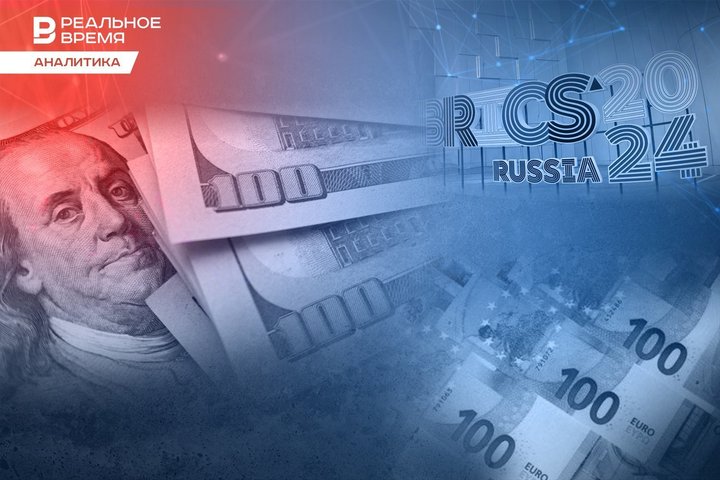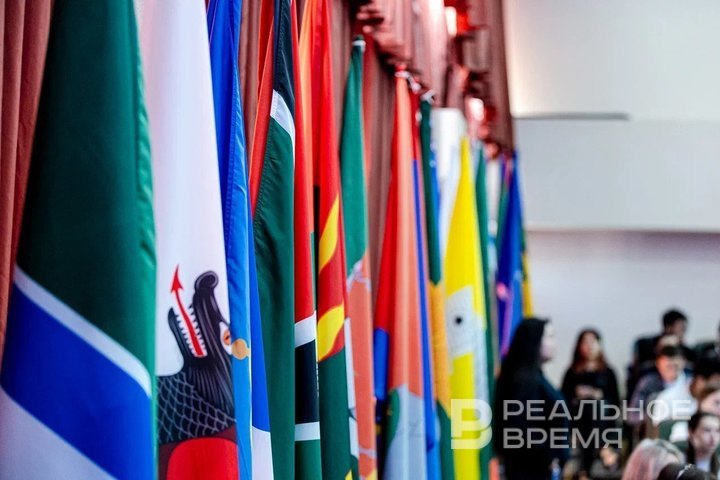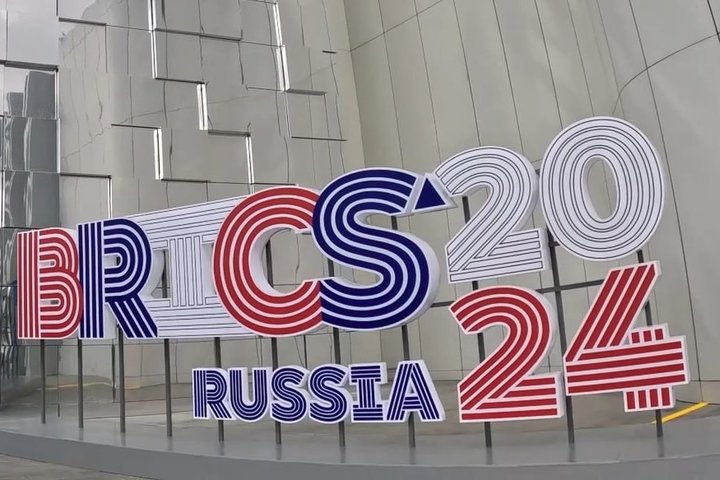How to harness a swan, a crayfish and a pike in one team? Experts about the creation of a single BRICS currency

For more than two years, Russia has been looking for ways to circumvent Western sanctions in the field of international settlements. Such solution, in particular, may be the creation of an alternative international payment system and a single currency of the BRICS countries. Judging by the statements at the Johannesburg summit, this issue may be included in the agenda of the meeting of the leaders of the countries within the framework of the BRICS Summit, which will be held in Kazan at the end of October. Realnoe Vremya has discussed with experts how realistic the appearance of such a currency could be in the near future.
Discussion on a single currency has been going on for years
At the last BRICS summit in Johannesburg, the leaders of the countries of the association instructed the finance ministers to study the issue of creating a single payment system. Brazilian President Luiz Inácio Lula da Silva said that the members of the association would discuss the creation of a single settlement currency the following year.
Currently, there are two main options for creating a single currency of the BRICS countries.
The first option. A new currency appears, which will be based on the basket of currencies of the BRICS countries. In this case, the currency will be created on the basis of a basket of state currencies of the BRICS countries. Similar currencies have been created more than once. The most striking example is the European currency ECU, which existed from 1979 to 1998.

Second option. One of the currencies of the BRICS countries will become a common currency for all. Most experts agree that this scenario is not as likely as the first one. If the supranational currency of the association is created on the basis of one of the currencies of the countries, most likely it will be the Chinese yuan. This is because the PRC's economy is the largest among the BRICS countries and is ahead of the economies of the rest of the organisation in size. The volume of trade between the countries of the association also speaks in favour of China. Most of all, all the countries of the organisation trade with China. The main obstacle to the implementation of this option is the need for a political solution, since there is a risk that not all countries will agree to use the Chinese yuan or another currency of one of the BRICS countries as a common currency.
Realnoe Vremya discussed with experts whether they see the potential of such a currency for international settlements.
“An analogue of the European Union is unlikely to be created on the basis of BRICS”

There is a need to create an alternative to the main reserve currencies, Osadchy agrees. The yuan is not suitable for this role, since it is neither a freely convertible nor a hard currency. “Gold is extremely inconvenient in calculations, and the era of the gold standard has long passed," the expert reflects. “In short, there is a need for an alternative reserve currency, but the BRICS is not able to generate it.”

“In order to create a single currency, it is necessary that large commodity and financial flows flow between the countries of the union, and political relations between the countries should be allied. We can't say anything like that about BRICS in general," the banker says. “Of course, there are very large commodity and financial flows between Russia and China. China is now a key partner of Russia. But at the same time, China has very tense relations with India: the last rather serious military conflict was in 2020, and armed clashes have taken place quite recently, due to the lack of a generally recognised border between these countries in the Himalayas. Russia has no serious economic and financial relations with either Brazil or South Africa. The distances between our countries are too great.
“BRICS is an amorphous entity that appeared as a beautiful idea to unite large developing countries into one group and add to them not too large, but also developing South Africa. The name BRICS was first proposed by analyst Jim O'Neill in November 2001 in a research note by Goldman Sachs Bank. There was no serious economic sense behind this reduction, but the idea caught on. And it rather had a political significance — the confrontation of large third world countries with the West," the analyst notes.

The Russia-China-India block would be absolutely magnificent if it weren't for the strained relations between India and China. In particular, for this reason, an attempt to make the yuan the main currency of the BRICS countries would also be a failure. India will never do that. In the event of a military conflict between China and India, the same thing may happen as happened with Russia in relation to dollars and euros — the arrest and blocking of Indian assets in yuan.
“I am extremely skeptical about such initiatives. They constantly appear and just as constantly disappear. It is impossible to create a workable analogue of the ECU, and even more so of the euro, within the framework of the BRICS. Such a currency, even if introduced, is unlikely to be popular, and the participating countries will not take on the risks of creating and maintaining the circulation of such a currency. An analogue of the European Union is unlikely to be created on the basis of BRICS," the expert concluded.
“The BRICS single currency is not needed”

According to the expert, common currencies require a very high level of political integration, but even if there is one, problems arise: “A vivid example is the Eurozone. Countries that are very close economically (although not all of them), a high level of political integration, and still there have been at least two serious crises in the euro area over the past 25 years.”

There are also common currencies of the countries of the former colonies, which are actually located on the currency of the metropolis, for example, this is West Africa, he recalls.
“There is another example — the Eurasian Union. The 2014 agreement on the establishment of the Eurasian Union stipulates that financial systems should be harmonised and a single financial regulator created by 2025. Where is harmonisation and where is regulator? It has not been found in Almaty (where it should be). At the same time, insurance policies are mutually valid in certain cases, and financial institutions can operate on the territory of other countries on facilitated terms. And this is the Eurasian Union, where there is much more economic unity," Tabakh cites as an example.
“Moreover, the single currency is not needed. And it's not about politics. This is a purely economic story," explains Anton Tabakh. “All the economies of the BRICS countries are very different, with different interest rates, different inflation, different monetary policy. In Brazil and Russia, monetary policy is super-rigid. It's a bit harsh in India. In China, on the contrary, they are trying to revive the economy in every possible way, and monetary policy there, on the contrary, is very soft. And how to harness not only a horse and a trembling doe, but a swan, a crayfish and a pike into one team?”
Today, BRICS needs a payment system and settlement tools, but this is a matter for the organisation. The single currency is not a dogma. The most important thing is cheap, effective, sanctions-protected payments and settlements in national currencies for trade, he concluded.
“This is populism, taking into account the acute geopolitical situation in the world”
“The single currency of the Commonwealth of several countries (BRICS) is one of the stages in the integration of states on a political and economic principle. But now, the introduction of such a common currency is populism, taking into account the acute geopolitical situation in the world," commented Alexander Potavin, analyst at Finam.
The BRICS Union is always considered exclusively as an economic union, there is no question of political integration (China and India are unlikely to become political friends), he adds. “The union is usually geographically close, and countries that are very spaced out (Russia in Europe, China and India in Asia, Brazil in South America, and South Africa in Africa) are not for operational management practices," the expert believes. “Plus, the developing BRICS countries are too different in both political and economic aspects, so it is hardly possible to seriously think about creating some kind of a single BRICS currency.”
Today, many politicians really dislike the fact that most settlements in world trade require the participation of the dollar as an intermediary for currency conversion, which means that American banks participate in them, Potavin says. This is especially annoying for Russia, since harsh external sanctions were imposed on it after the events in Ukraine, so all payment processes related to the dollar, euro and other reserve currencies turned out to be impossible, he recalls. Because of this, the Russian leadership spares no effort in promoting the ideas of creating new payment structures, creating new supranational currencies and similar projects.

“Settlements in national currencies are a sign of a very primitive trade with a meager assortment in turnover. Such a system quickly runs into the limits of growth precisely in view of the limited further use of these national currencies. Developed trade relies on a more complex system of global settlements," he says.
By the way, the creation of a joint currency in the BRICS was abandoned quite recently. But there is no talk of creating an alternative payment system this year. These are global goals for an indefinite long-term perspective. In principle, the Chinese yuan could become a new binding currency, but it is not fully convertible and, for example, it is completely unsuitable for India. Therefore, discussions on the topic of a joint BRICS currency have been going on for a long time, but there is still little progress in the real field.”

“Firstly, the monetary policy of most BRICS members is very different. It is necessary to form common goals and objectives of monetary policy, principles of currency regulation, and emissions," he lists. “Secondly, the level of trust is insufficient. This is especially evident in the relations between China and India. In particular, the number of restrictions on Chinese goods in India is greater than in the United States.”
“The strong difference in the competitiveness of the BRICS economies raises concerns that stronger economies will overwhelm weaker ones by using the tools of the single currency system. I think international settlements will focus on national currencies. The probability of the emergence of a single BRICS currency in the foreseeable future is extremely low," Shayakhmetov concluded.